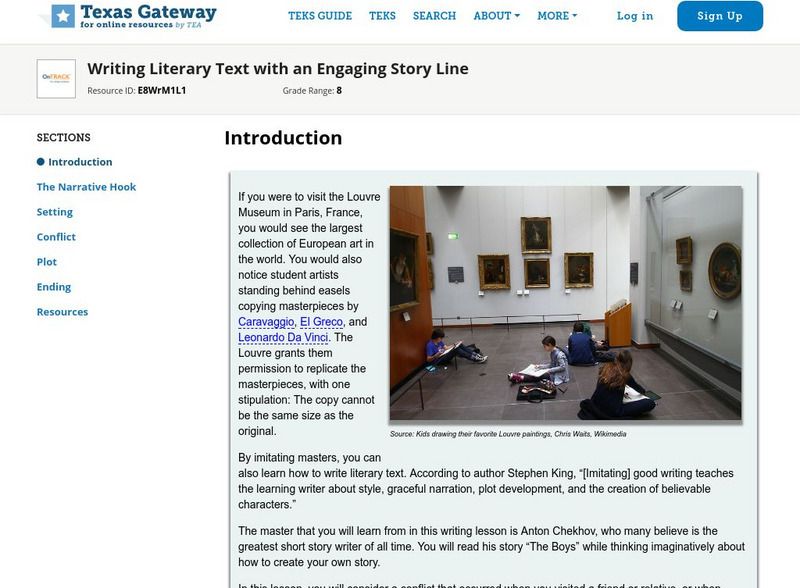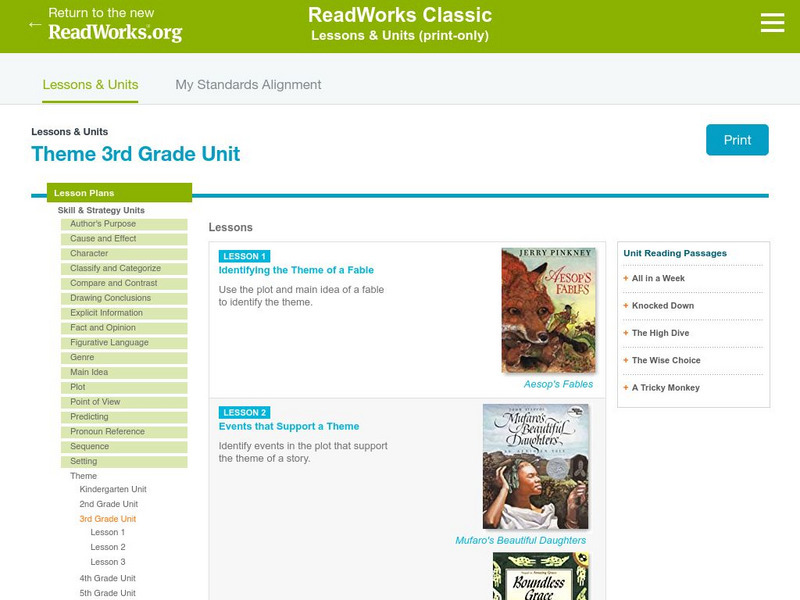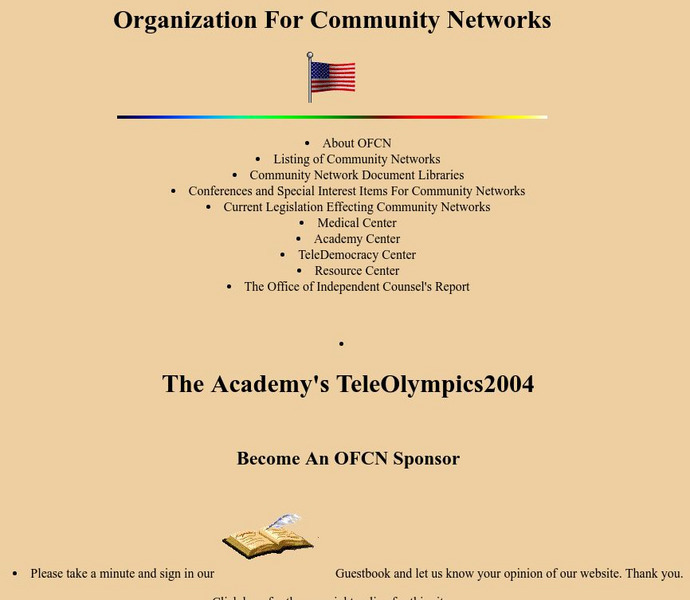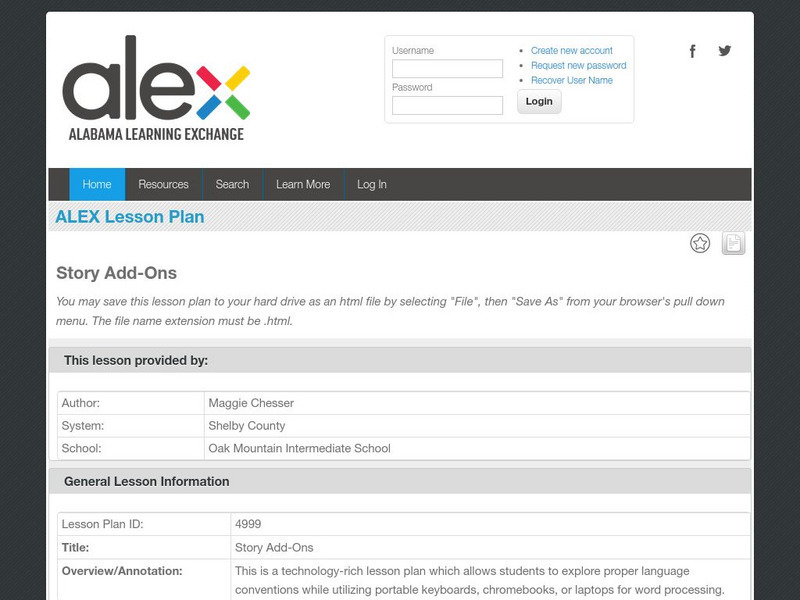Hi, what do you want to do?
Texas Education Agency
Texas Gateway: Analyze Linear Plot Developments in Literary Texts/fiction
[Accessible by TX Educators. Free Registration/Login Required] This lesson focuses on how conflicts determine the resolution of the story. In this lesson, students learn how to recognize conflict, analyze linear plot, and determine how...
Texas Education Agency
Texas Gateway: Explain Influence of Setting on Plot Development in Literary Text
This lesson is about the relationship between setting and plot. The setting enhances the story by folding the plot into a place and time that fits perfectly with what is going on; in fact, it is often the setting that makes the action...
ReadWriteThink
Read Write Think: Using Picture Books to Teach Plot Development and Confict Res.
Students read picture books to explore the concepts of plot development and conflict resolution. They first learn about the connections between reading and writing, and then revise their own writing. CCSS.ELA-Literacy.CCRA.R.4
Texas Education Agency
Texas Gateway: Analyze Linear Plot Developments in Literary Texts/fiction
[Accessible by TX Educators. Free Registration/Login Required] In this lesson, you will learn how to recognize conflict, analyze linear plot, and determine how the conflict is resolved.
Texas Education Agency
Texas Gateway: Isolated Scenes and Plot Support
Plots have momentum or a forward motion. In this lesson, we will isolate and discuss specific plot scenes from several works of fiction. You will learn how each scene moves the plot forward toward the resolution.
Sophia Learning
Sophia: Characters and Plot
This lesson introduces the connection between characters and plot in fiction writing.
Read Works
Read Works: Plot 1st Grade Unit
[Free Registration/Login Required] A series of three lesson plans designed to teach students to identify problems and solutions in fiction text and to retell a story's problem and solution in sequence. Students learn to identify the plot...
Read Works
Read Works: Grade 2: Three Lesson Unit: Plot
[Free Registration/Login Required] A series of three lesson plans designed to teach students to identify story elements, retell a story using story elements, and see how characters affect the plot. Lessons are based on the books Dog...
Read Works
Read Works: Plot Kindergarten Unit: Retelling a Story
[Free Registration/Login Required] Teach retelling a story using plot elements through explanation, guided practice, and independent practice as students develop the skill. The text, My Red Balloon by Eve Bunting, must be provided by the...
Read Works
Read Works: Plot 3rd Grade Unit
[Free Registration/Login Required] A series of four lesson plans designed to teach students to predict problems and solutions in fiction text and to identify the relationship between problems and character conflicts within a story....
Writing Fix
Writing Fix: A Chapter Book Writing Lesson: Creating a Parallel World
Inspired by the opening events in The Subtle Knife by Philip Pullman, young scholars are asked to create an original parallel world that is similar to ours but different in certain ways. They will focus on the similarities and...
TES Global
Blendspace: Story Elements
A twelve-part learning module with links to videos, images, and websites to use while learning about story elements and the development of a plot.
Sophia Learning
Sophia: Characters and Theme
This lesson introduces the connection between characters and theme in fiction writing. RL.9-10.3 Analyzing Characters
University of South Florida
Fcat Express: Teaching Strategies (Reading) [Pdf]
Printable, fifty-five page PDF file of a staff development manual containing strategies for teaching reading. Includes chapters on vocabulary, main ideas and supporting details, author's purpose, chronological order, plot and conflict...
Texas Education Agency
Texas Gateway: Writing Literary Text With an Engaging Story Line
A learning module that teaches students how to write an engaging literary text in six lessons: Introduction, The Narrative Hook, Setting, Conflict, Plot, and Ending.
Read Works
Read Works: Theme 3rd Grade Unit
[Free Registration/Login Required] This site provides a series of three lesson plans designed to teach students to identify and support the theme of a fable and a fiction selection based on main idea and supporting details. Lessons are...
Louisiana Department of Education
Louisiana Doe: Curriculum Hub: Ela Guidebooks: Romeo and Juliet: Act Ii, Scene 4
Students react to Act II, scene 4 from Romeo and Juliet and explore what events develop the plot.
Sophia Learning
Sophia: Characters and Setting
This lesson introduces the connection between characters and setting in fiction writing.
Varsity Tutors
Varsity Tutors: Web English Teacher: William Shakespeare: Othello
This resource provides links to lesson plans, activities, study guides, and other teaching ideas for Shakespeare's "Othello."
Organization for Community Networks
Ofcn: The "Real" Fairy Tales
This lesson plan was designed to help students develop their imagination and writing skills. Students will have an opportunity to rewrite their favorite fairy tales.
Alabama Learning Exchange
Alex: Story Add Ons
This is a technology-rich lesson plan which allows students to explore proper language conventions while utilizing portable keyboards for word processing.
Texas Instruments
Texas Instruments: Getting Started With the Ti Navigator: Coordinate Graphing
This lesson introduces students to Activity Center and is intended to help students develop an initial conceptual understanding of how to plot a set of points using a coordinate grid and to create lists to represent the ordered pairs for...
Other
Literature Unit: "A Day No Pigs Would Die"
This site features questions for each of the chapters in Robert Newton Peck's "A Day No Pigs Would Die."
TES Global
Blendspace: What Makes Stories Scary?
A learning module that includes fourteen links to websites, videos, and activities on writing scary stories. Lessons focus on vocabulary, plot and character development, elements of gothic stories, tone and mood, suspense, and more.






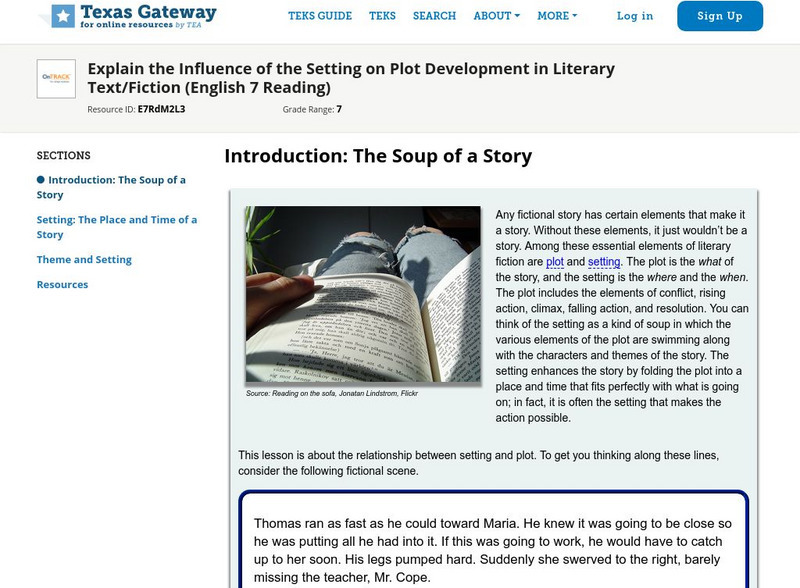




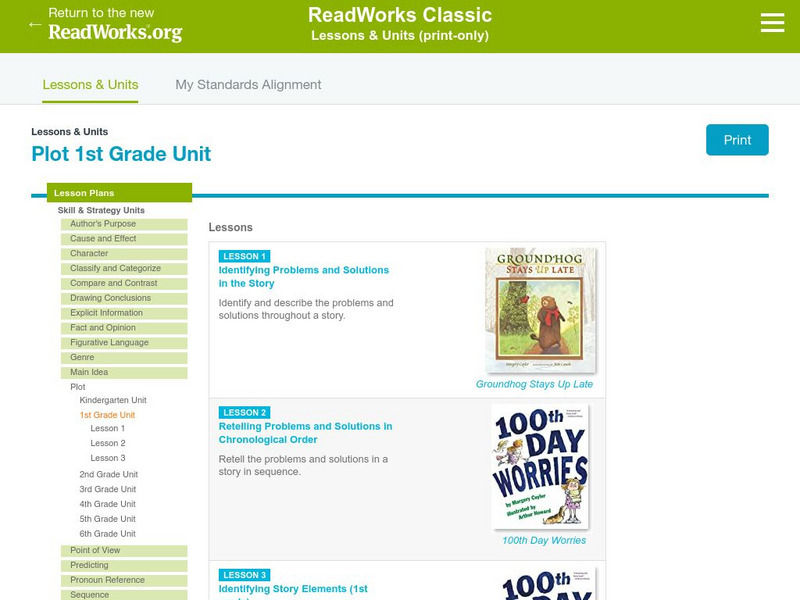

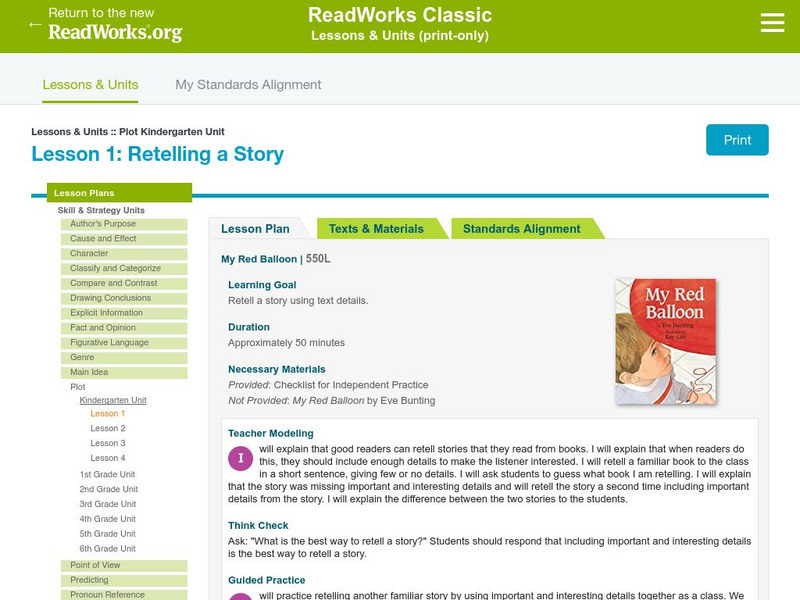
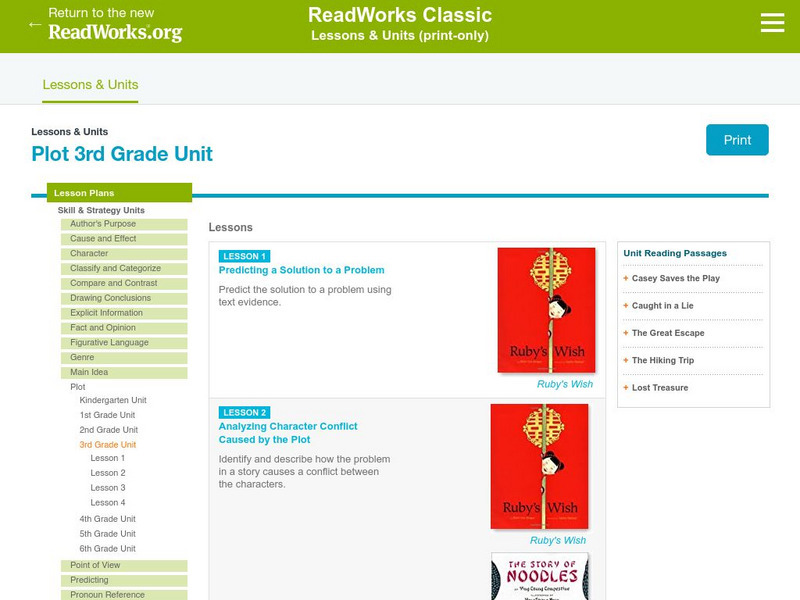

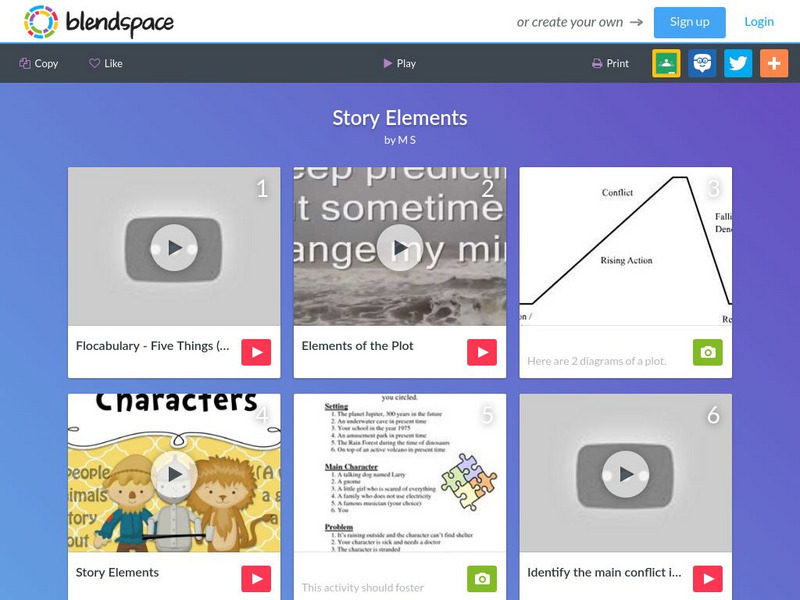
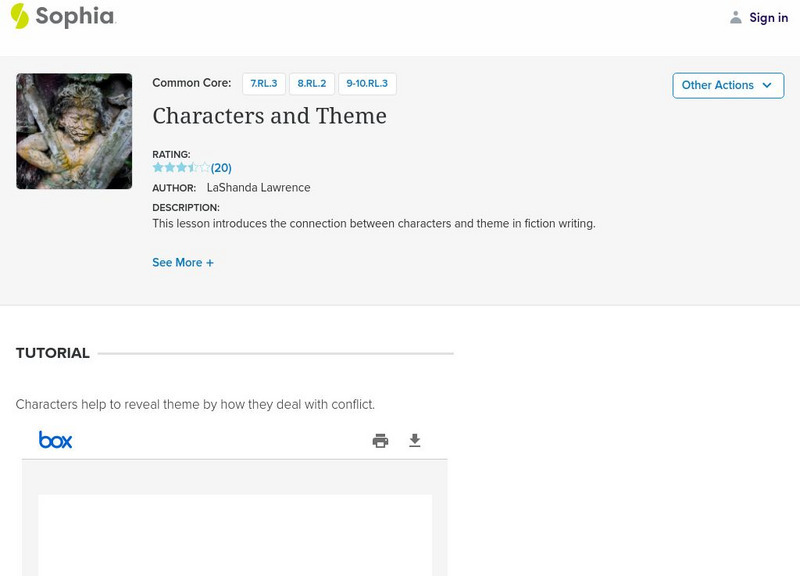
![Fcat Express: Teaching Strategies (Reading) [Pdf] Study Guide Fcat Express: Teaching Strategies (Reading) [Pdf] Study Guide](https://static.lp.lexp.cloud/images/attachment_defaults/resource/large/FPO-knovation.png)
